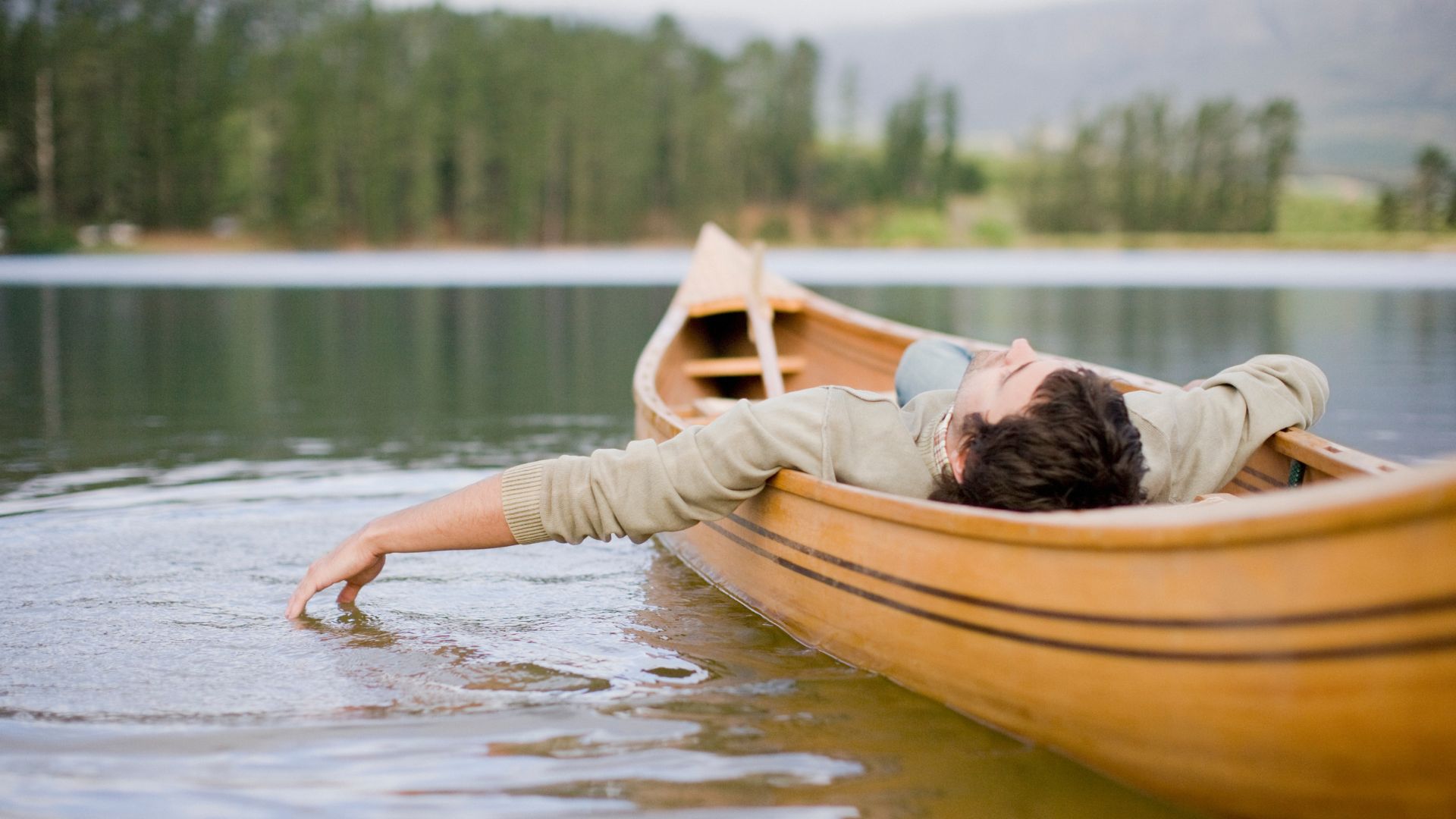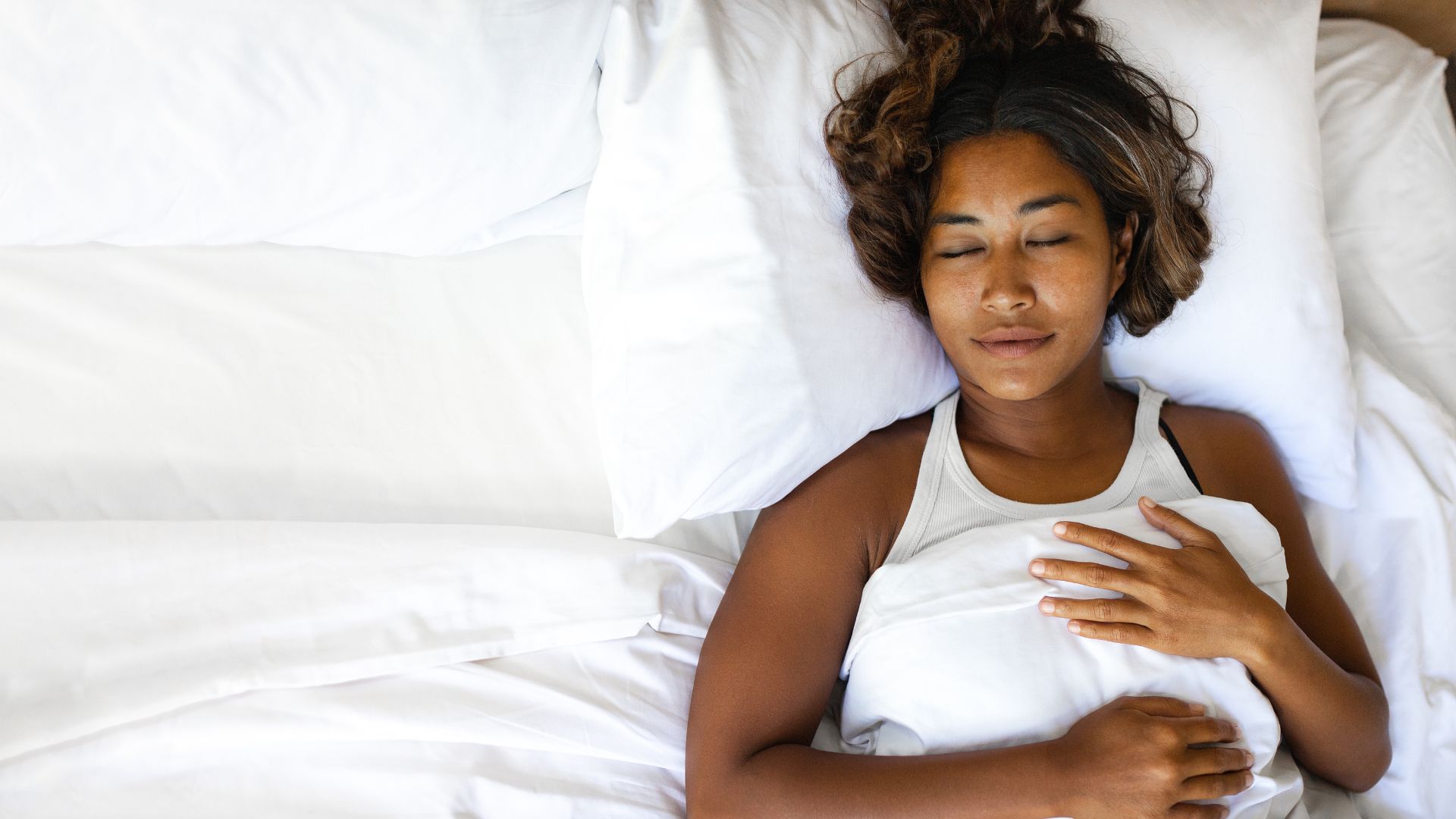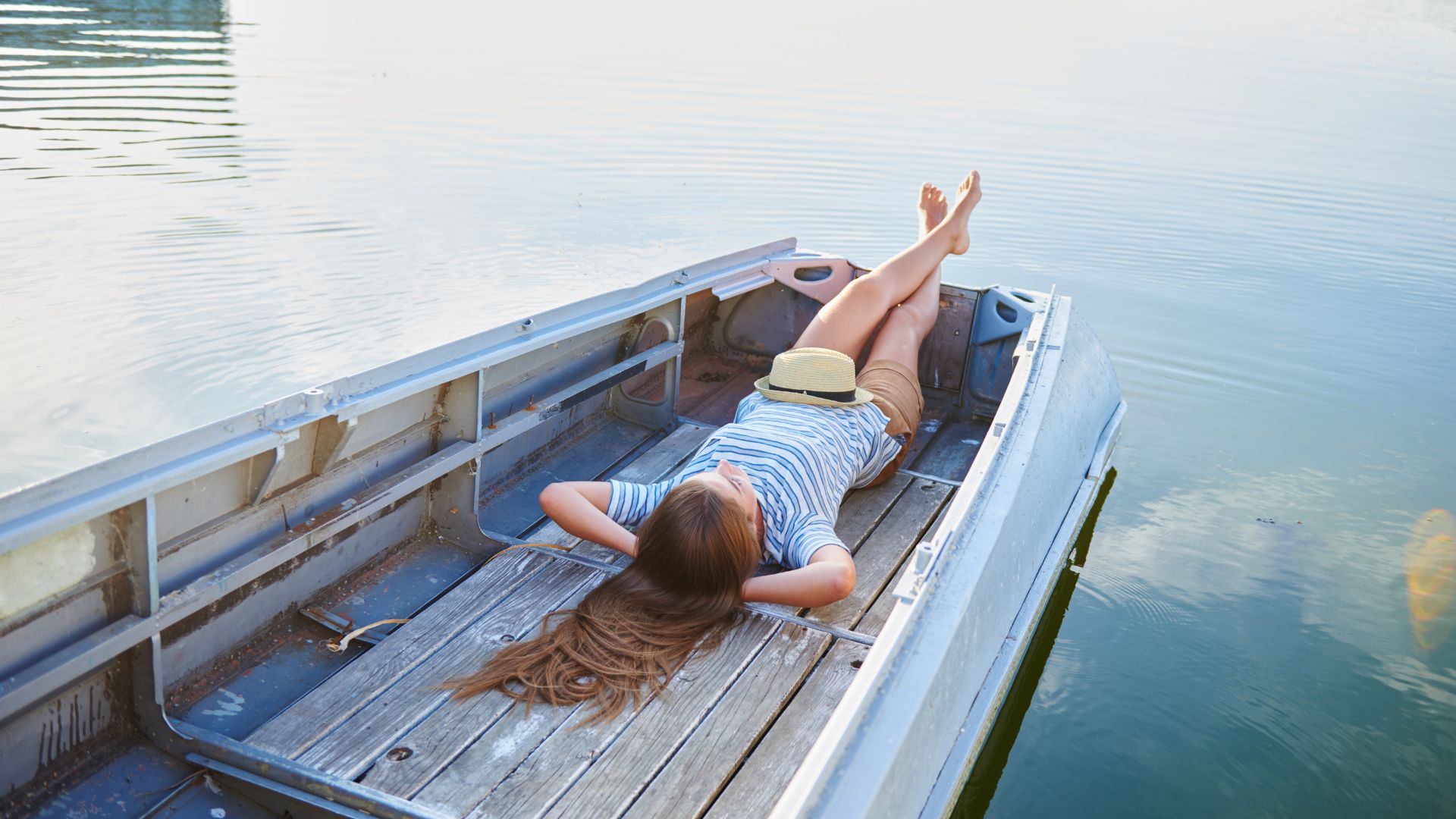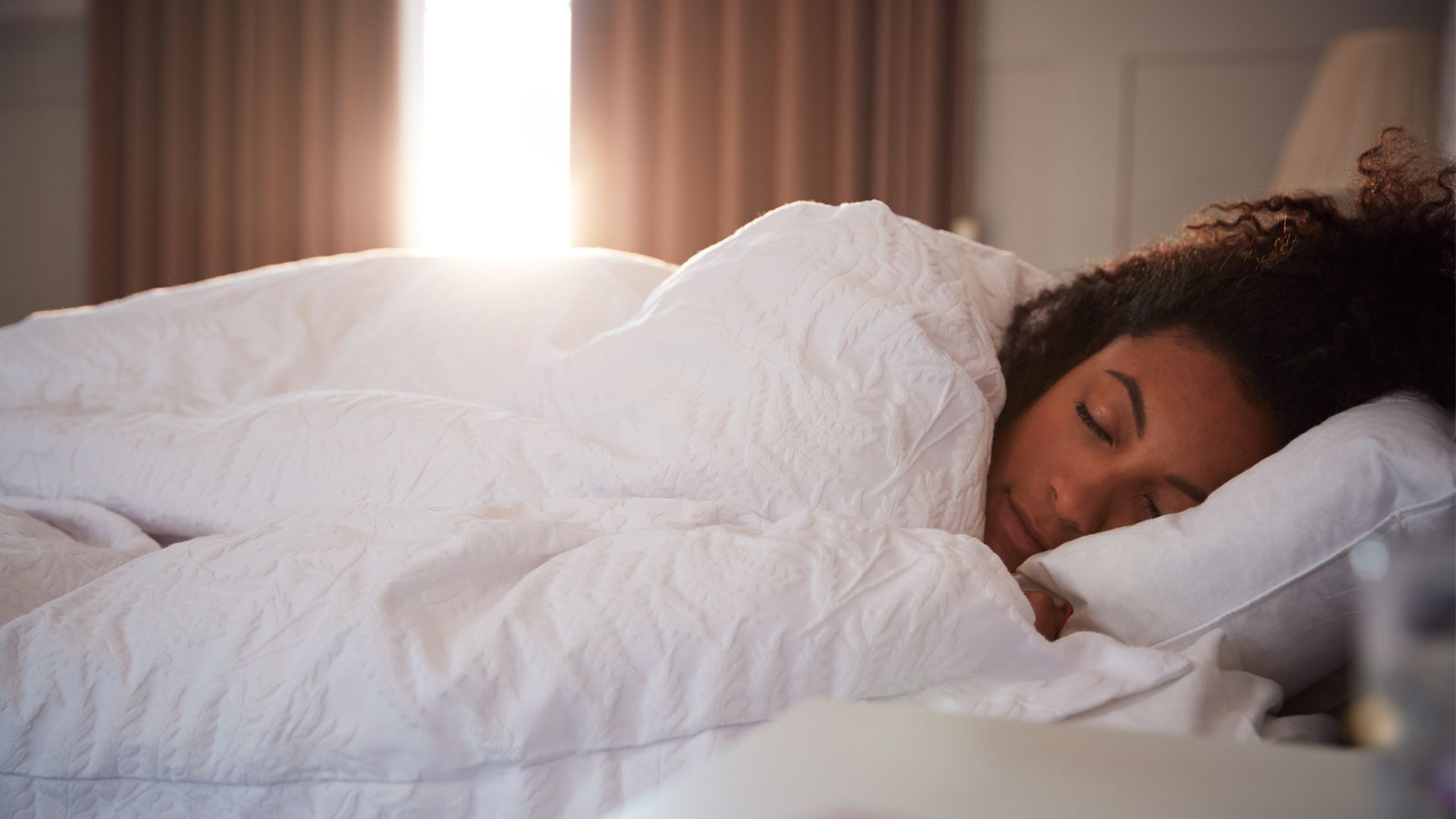The Military Method promises sleep in 2 minutes — but what is it?
Plus how to try the Military Sleep Method yourself

The Military Sleep Method originated as a technique to assist soldiers in getting to sleep when they have the opportunity to rest during high-pressure combat situations, but it has since become hugely popular.
And, as we enter the coldest months of the year when many of us struggle with our sleep, the military method for sleeping may be able to help you fall asleep faster.
The drop in temperatures and reduced daylight hours in fall and winter can disrupt your circadian rhythm (your internal body clock), or even lead to Seasonal Affective Disorder (SAD), a type of depression, both of which can have a huge impact on your sleep. If that's you, the claims that the Military Sleep Method can help you get to sleep in just two minutes may be music to your ears.
But how does it work? And how can you practise it at home? We take a closer look.
- Read more: Intrusive thoughts keeping you awake? Try this ER doctor ‘brain hack’ to fall asleep quickly
What is the Military Sleep Method?
This US army sleep technique was first documented in Lloyd Bud Winter’s often-quoted 1981 book Relax and Win: Championship Performance.
The technique was designed to help soldiers fall asleep fast by focusing on relaxation and alleviating muscle tension. In turn, this activates the parasympathetic nervous system, which oversees rest and sleep.
Within six weeks, the Military Sleep Method is said to be effective for 96% of people.
In his book, Winter described it as a highly effective method to help you fall asleep in two minutes.
Get instant access to breaking news, the hottest reviews, great deals and helpful tips.
I've been using the military sleeping method for over two years now so it definitely helps me fall asleep in mere minutes, but you'll probably have a hard time falling asleep in two minutes the first few times you use the technique.
Within six weeks, the Military Sleep Method is said to be effective for 96% of people.
How to use the military sleep method
1. First, relax your jaw and facial muscles, including your tongue.
2. Now drop your shoulders down as far as they’ll go to release the tension.
3. Keep your arms loose by your sides, relaxing your fingers and hands.
3. Exhale deeply to relax your chest, then relax the muscles in your legs and feet.
4. Imagine a calming, warm sensation spreading from your head down to your toes.
5. Inhale and exhale deeply, clearing your mind of thoughts and stresses.
6. Now think about one of the following two images: either you are lying on your back in a canoe on a placid, calm lake with nothing but a crystal clear sky above you. Alternatively, imagine you are lying in a black velvet hammock in a pitch black room.
7. If your mind wanders off, repeat the words, ‘Don’t think, don’t think, don’t think’ for about 10 seconds before returning to the visualisation. Repeat this until you feel drowsy and fall asleep.

How does the Military Sleep Method work?
The Military Sleep Method essentially combines deep breathing, a form of progressive muscle relaxation (although you just release the tension, rather than tensing each muscle first) and visualization to calm the body and mind.
Each of these aspects contributes to relaxing you in slightly different, but complimentary ways.
Six weeks of nightly practise and you should be falling asleep much faster than before
Deep breathing slows down our heart rate and activates our parasympathetic nervous system which promotes feelings of calm, while research has shown it can also result in the production of the 'sleepy hormone,' melatonin.
Muscle relaxation helps to release stress and tension within the body, while visualization refocuses your brain from any anxious, racing thoughts to more pleasant mental images.
One study found that visualization was associated with shorter sleep onset latency (the time it takes to fall asleep) and fewer distressing thoughts before bed in people with insomnia.
Using the Military Sleep Method to fall asleep in two minutes at first might be a tall order, but give it six weeks of nightly practise and you should be falling asleep much faster than before.

Can the Military Sleep Method really help you fall asleep in 2 minutes?
It's worth keeping in mind that the view of the majority of doctors of sleep medicine and chartered psychologists who specalize in sleep disorders is that if the conditions are right, a healthy adult should fall asleep within 20 minutes.
There are two areas to unpack here; firstly that while Military Sleep Method may be able to help you drop off more quickly, any time within 20 minutes is still perfectly normal.
Secondly, you need to be mindful of the conditions you need in order to sleep, which include feelings of drowsiness, being in a bedroom that's optimized for sleep (cool, dark and quiet), and avoiding stimulants, such as caffeine and blue-light emitting screens in the lead up to your bedtime.

You're probably not going to find the Military Sleep Method as effective if you're in a hot room with light pollution, and you've been scrolling on your phone over a caffeinated drink right before bed,
Military sleep techniques also simply just don't work for some people. While there isn't a definitive answer as to why this is. Instead, you may be better off with sleep sounds (such as white noise or rainfall sounds) to relax you and help you fall asleep fast at night. Alternatively, you could try simple breathing exercises like the 'alpha bridge' method.
For the rest of us, there's every reason to believe the Military Sleep Method can help you drop off quickly.
When to see your doctor about sleep issues
If you're struggling to fall asleep within a healthy amount of time at night (usually within 20 minutes for most healthy adults), and this has been going on for more than a week, then it's time to look at some potential causes.
Not knowing your sleep chronotype can lead to trouble at bedtime, as you might be a night owl forcing themselves into an early bird's sleep routine.
Check in with yourself around bedtime and ask yourself, 'Am I feeling tired enough to fall asleep easily?' If not, you may want to look at pushing your bedtime back a little to build up your sleep drive (hunger for sleep).
If you feel your inability to fall asleep quickly is driven by stress or a mental health issue, we'd advise speaking to your doctor or healthcare professional to see what support is available.

Claire is a Certified Sleep Science Coach and the Managing Editor of Sleep at Tom's Guide. She curates our mattress guides and oversees our rigorous mattress testing procedures. Claire has over 16 years' product review experience and is connected to a wealth of globally renowned sleep experts including mattress designers and buyers, neuroscientists, and doctors of sleep medicine. As the Managing Editor of our Sleep and Mattress Team, Claire is responsible for all mattress and sleep content published on Tom’s Guide and is our expert on Saatva, DreamCloud, and Nectar mattresses. Claire is also certified to advise people on how to choose a mattress that suits their needs and budget, as well as helping them to create a nighttime routine and bedroom environment that helps them sleep better.
You must confirm your public display name before commenting
Please logout and then login again, you will then be prompted to enter your display name.
